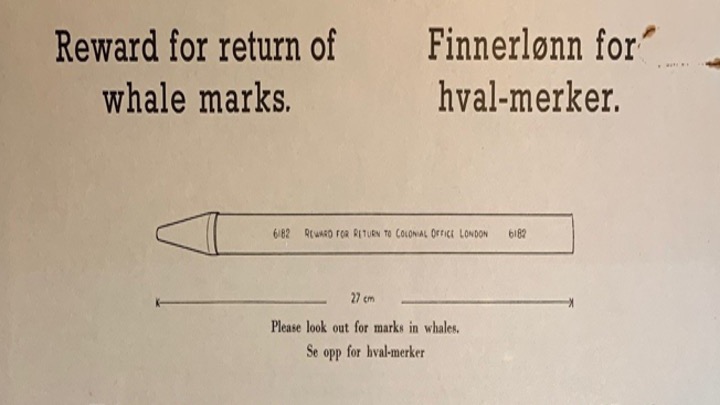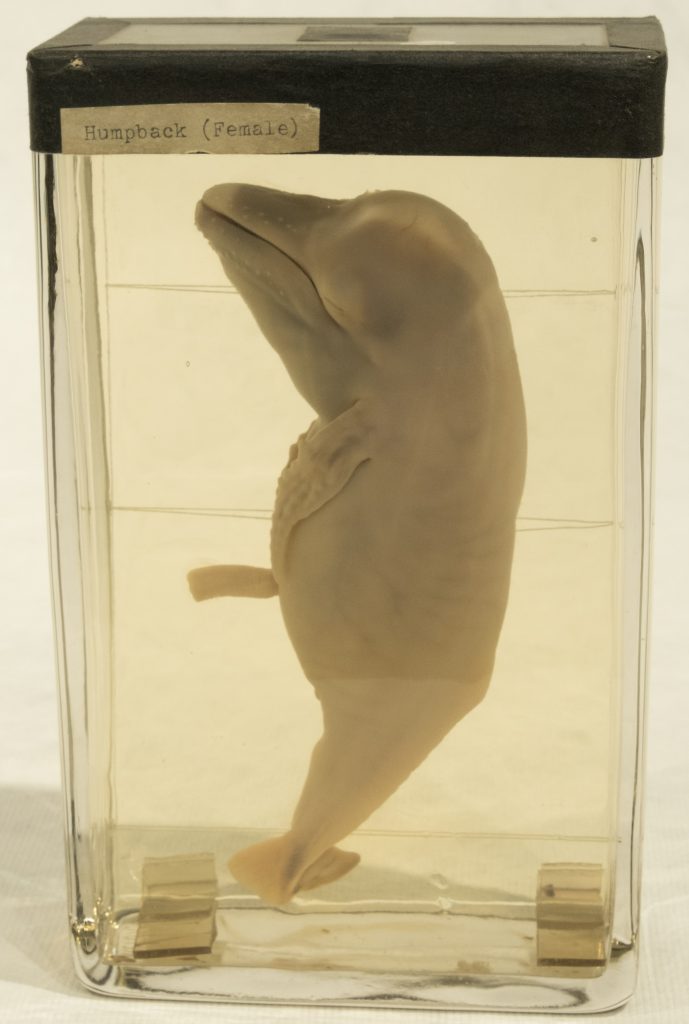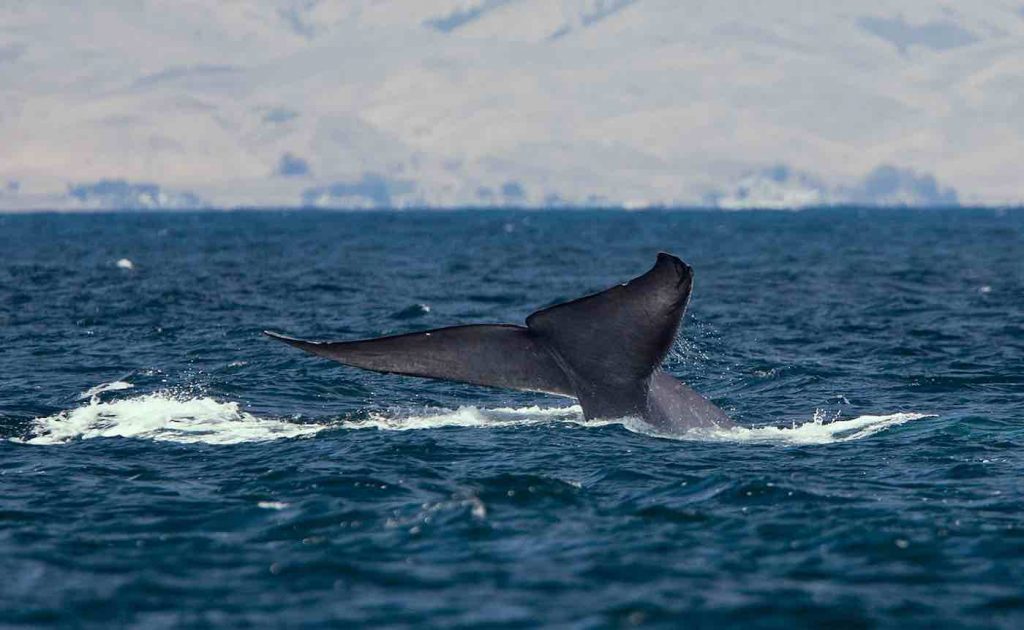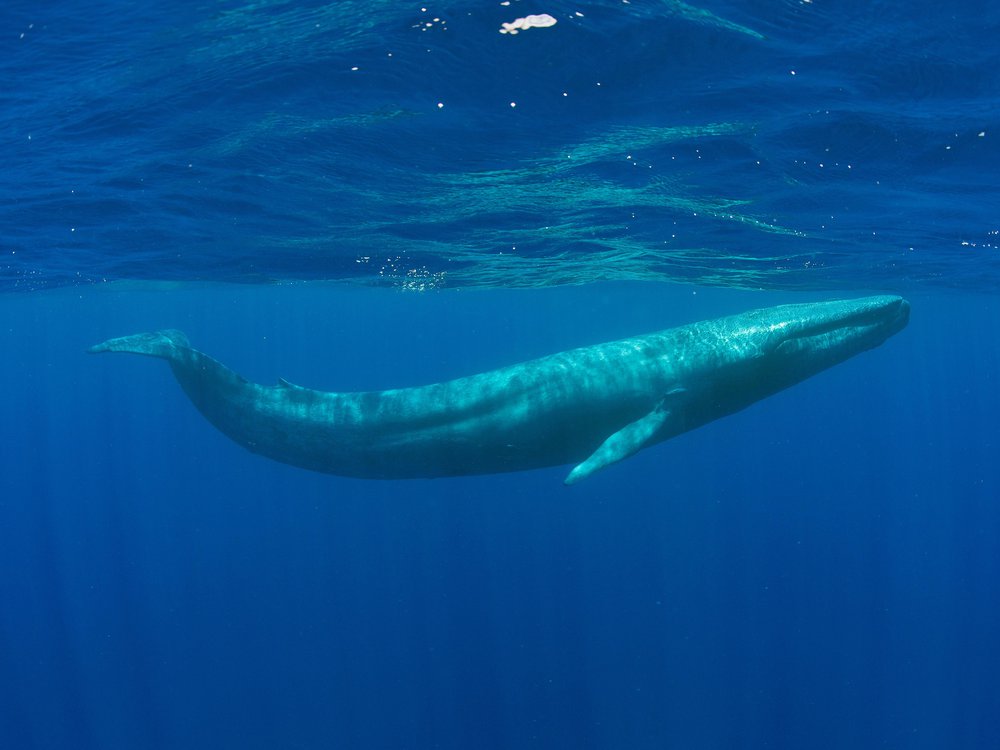 Discovery mark (Photo from International Whaling Commission) Discovery mark (Photo from International Whaling Commission) |
Historical movement of Antarctic blue whales I analyzed historical mark-recovery data from the Discovery marking scheme. I use Bayesian models that integrate abundance data to estimate inter-season movement rates among the three ocean basins in the Southern Ocean (Atlantic, Indian, and Pacific), finding high probabilities of inter-season movement in almost all directions. These high rates of movement suggest that there is little evidence for population structure arising from geographic separation between Antarctic blue whales in the Southern Ocean. Read the paper here. |
 Humpback whale fetus (Photo from South Georgia Museum) Humpback whale fetus (Photo from South Georgia Museum) |
Do longer baleen whale mothers produce more males? Using whaling data I investigate long-standing ecological theories of adaptive sex ratio behavior in rorqual whales. We found the opposite trend that had been predicted for ungulates, that longer mothers had more female calves. This suggests that being big is important for baleen whale mothers to survive the costs of reproducing. Read the paper here. Check out my poster here. |
 Antarctic blue whale (Photo credit: “Mike” Michael L. Baird (CC)) Antarctic blue whale (Photo credit: “Mike” Michael L. Baird (CC)) |
What is the current status of Antarctic blue whales? The Antarctic blue whale is the largest of all blue whale subspecies and, before whaling, the most numerous, accounting for 90% of pre-whaling blue whale abundance. In 2004, it was found that that their population size was increasing, though still at less than 1% of their pre-whaling abundance. In this study, I use Bayesian methods to integrate multiple historical and contemporary datasets to estimate the population size and growth rate of Antarctic blue whales. IWC paper with preliminary results can be found here. |
 Pygmy blue whale (Photo credit: Andrew Sutton, Shutterstock) Pygmy blue whale (Photo credit: Andrew Sutton, Shutterstock) |
What is the natural survival rate for blue whales? The best way to age whales remained a mystery until the mid 1950s when it was discovered that researchers could use the alternating layers of light and dark ear wax that formed in the ear canal, known as an earplug, to estimate age.This will be the first study to compile all available blue whale earplug data. Using this data, I will fit models to understand the age-length relationship for blue whales, as well as estimate natural survival and age at sexual maturity. These results will provide valuable information that can be used for evaluating extinction risk and population recovery for blue whales. |